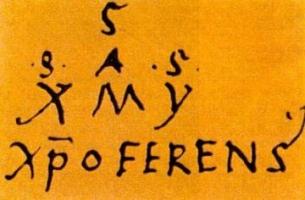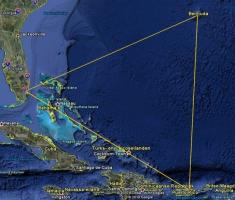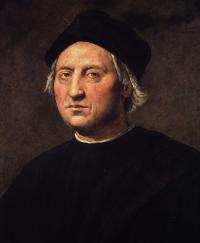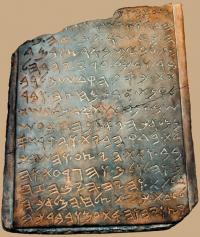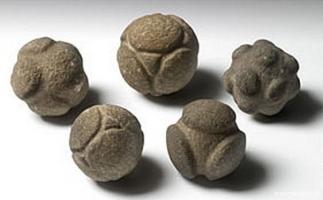The origin of Christopher Columbus: the official documents

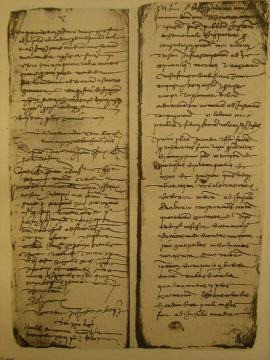
Nowadays no serious scholar doubts that Christopher Columbus was born in the Republic of Genoa.
However, there are still many pseudo-researchers who, based on false information or conjectures, claim that the famous navigator had a completely different origin.
Let's first see what the great Spanish historian Gonzalo Fernandez de Oviedo wrote in his Historia General y Natural de las Indias:
Cristobal Colon, according to what I was able to learn from men of his nation, was born in the province of Liguria, which is in Italy, and in which the city of Genoa is located: some say that he is from Savona, and others from a small village which is called Nervi, which is on the eastern side of Genoa and which is two leagues away, on the coast overlooking the sea; others say that he was born in a village called Cugureo, also near the city of Genoa.
One of the greatest historians of the 16th century therefore indicates the Republic of Genoa (even if he does not provide the precise place) as the territory of origin of the great navigator.
But let's go to the official documents that indisputably prove Christopher Columbus' Genoese origins.
In total there are more than sixty documents that refer to Colombo or members of his family.
Two documents refer to Crisoforo's grandfather, Giovanni, born in Moconesi near an ancient road that leads from Piacenza to Genoa. Thirty-five documents refer to his father Domenico, born in Quinto (Genoa).
Three documents refer to his mother, Susanna Fontanarossa.
The most important of these writings is the so-called Assereto Document, found by Ugo Assereto in the Genoa archive in 1904, among the deeds of the notary Girolamo Ventimiglia.
In July 1478 the Centurione house of Genoa commissioned Christopher Columbus to buy a batch of sugar on the island of Madeira. However, the representative of the Centuriones in Portugal, Paolo de Negro, did not send Colombo the sum necessary for the purchase.
About a year later Lodisio Centurione wanted to ascertain the responsibilities of the incident before a notary in Genoa.
In this document, which appears to have been written on 25 August 1479, Columbus appears as a witness in the dispute between Lodisio Centurione and the brothers Paolo and Cassano de Negro.
The future admiral declares, under oath, to be a Genoese citizen:
“Christopher Columbus, civis Januae”
or:
“Christopher Columbus, citizen of Genoa”
Those who dispute the Genoese nature of the Admiral of the Ocean Sea maintain that Christopher Columbus, son of Domenico and Susanna Fontanarossa, has nothing to do with Cristóbal Colon, Almirante of the Ocean Sea.
They usually add, being misinformed, that Cristóbal Colon would never have written anything about his Genoese origins.
In general, ever since he settled in Spain, Columbus never denied his origins, but he tried to divulge them as little as possible, because the simple fact of being a foreigner hindered his plans.
One of the proofs of the fact that Christopher Columbus and Cristóbal Colon were the same person is precisely the Assereto Document, which in addition to establishing the Genoese nature of Christopher Columbus, proves the fact that he himself was in Madeira in 1478. But it is well established that Cristóbal Colon himself was in Madeira in those years, the island where he met his first wife, Felipa Moniz Perestrelo.
However, in two writings the now admiral Col mentions his origins.
In the writing “Institución de Mayorazgo”, on 28 February 1498 he orders his son Diego to take care of the maintenance of a family member in Genoa:
“He who keeps the woman at home…as a person linked to our lineage, can go up to the Nazis”
Or:
“May he have a house and a wife…since he is a person of our lineage, as I left from there and was born in that city”.
The second document that inextricably links the Genoese Columbus to Colon Almirante is a letter to the Protectors of the Compere of San Giorgio (Genoa), dated 2 April 1502:
“As long as the body goes away, the heart is always there”.
Or:
“Even if the body travels this way, the heart is there continuously.”
A final, important document is the deed of the notary Giovanni Battista Peloso before which the three sons of Antonio Colombo (brother of Domenico, father of Cristoforo) appeared.
Matteo, Amighetto and Giovanni declared that they agreed to divide equally the costs that Giovanni would have to bear to visit his cousin, Cristobal Colon, almirante of the rey de España.
YURI LEVERATTO









